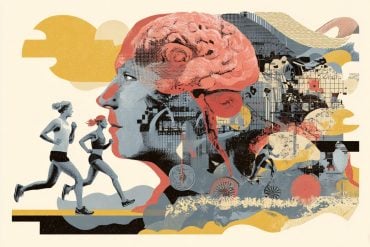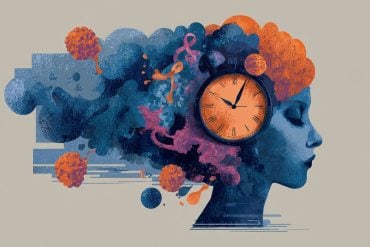Summary: A new neuroimaging study reveals dehumanization and dislike are processed by two separate brain regions, suggesting there may be two distinct psychological processes at work.
Source: University of Pennsylvania.
During the past week, the news has brought us difficult images and sounds: Migrant and refugee children huddled in steel cages. Children and parents wailing as they are torn apart by American agents. Detention buses filled with infant car seats.
The majority of Americans oppose the policy of separating families at the border, but a substantial percentage have no problem with it. “How is that possible?” many wonder. “These are human beings.”
Researchers who study dehumanization, however, know that not all people see it that way. It is very common for people around the world to look at entire groups of people–for example, Muslims, Native populations, Roma, Africans, or Mexican immigrants–as not fully human.
Conventional wisdom has long assumed that talking about people in dehumanizing terms, as “dogs” or “pigs” or “pests,” was simply an extreme expression of dislike for them. But according to new research published in the Journal of Experimental Psychology, dehumanization and dislike are processed by two completely separate regions of the brain, which suggests that they may be two different psychological processes.
For example, many people would say that children and puppies don’t have a fully realized human mind, but that they are still lovable. On the other hand, it is possible to dislike an arrogant colleague while still believing that he or she is fully human.
“When people are dehumanizing others, they are mobilizing different brain regions than when they are registering their dislike,” explains co-lead author Emile Bruneau, Ph.D., director of the Peace and Conflict Neuroscience Lab at the University of Pennsylvania’s Annenberg School for Communication. “Brain regions sensitive to dehumanizing other groups were not sensitive to dislike. And brain regions activated when registering dislike for those same groups were not activated when thinking about how human those groups are.”
In the experiment conducted by Bruneau and colleagues, the researchers used functional magnetic resonance imaging (fMRI) to observe participants’ brain activity as they rated how they felt about 10 different groups. They ranged from high-status groups like Americans, Europeans, and surgeons to lower-status groups like Muslims, Roma, and the homeless, and also included animals like puppies and rats.
“Dislike” was measured on a feeling thermometer scale, which asks people to rate how “cold” or “warm” they feel toward the target group, and dehumanization was measured by asking participants to place the target group where they thought they belonged on the popular “Ascent of Man” scale depicting stages of evolution. Previous research from Bruneau and co-lead author Nour Kteily of Northwestern University found that while researchers had long been measuring dehumanization implicitly, believing that few would openly admit they felt other people weren’t fully human, in fact many people have no problem blatantly saying so.
In any real-life situation with high levels of dehumanization, the stakes are high, as it is a strong predictor of aggressive outcomes such as support for torture, reluctance to provide aid to violence victims, support for armed conflict, and support for hostile policies. But knowing that dislike and dehumanization are two separate factors can help understand and address people’s viewpoints.
The belief that the American government is justified in separating migrant or refugee children from their parents, Bruneau explains, isn’t necessarily values-driven or infused with hatred. It can be a cold, rational evaluation: “These children are just less human and less deserving of moral concern.” Removal of children from families has a long tradition, and the impetus is often not anchored in dislike or hatred. In fact, some people justify these removals as paternalistic care.
“High dehumanization and low prejudice is the perfect profile of paternalism,” Bruneau explains. “Some Americans may feel we’re doing good in taking these poor immigrant children away from their lawless parents.”

“The whole reason I study dehumanization is that I’m interested in intervening to reduce intergroup hostility,” he adds. “Understanding there’s a fundamental difference between dehumanization and dislike is academically interesting, but more importantly, it may prove practically useful.”
Many interventions to try and reduce intergroup conflict–between groups like Israelis and Palestinians, blacks and whites in South Africa, or Muslim refugees and Westerners–focus on getting people to like each other more. That, Bruneau says, is very difficult.
It may be easier to get people to see each other as human, which is, after all, an objective truth. At the very least, knowing that dehumanization and dislike are independent roads to intergroup hostility can increase the number of avenues to peace and reconciliation.
Funding: DRAPER Research Laboratories, Beyond Conflict funded this study.
Source: Julie Sloane – University of Pennsylvania
Publisher: Organized by NeuroscienceNews.com.
Image Source: NeuroscienceNews.com image is adapted from the University of Pennsylvania news release.
Original Research: Abstract for “Denying humanity: The distinct neural correlates of blatant dehumanization” by Bruneau, Emile; Jacoby, Nir; Kteily, Nour; and Saxe, Rebecca in Journal of Experimental Psychology. Published June 25 2018.
doi:10.1037/xge0000417
[cbtabs][cbtab title=”MLA”]University of Pennsylvania”In the Brain, Dislike and Dehumanization Are Not the Same Thing.” NeuroscienceNews. NeuroscienceNews, 25 June 2018.
<https://neurosciencenews.com/dislike-dehumanization-brain-9434/>.[/cbtab][cbtab title=”APA”]University of Pennsylvania(2018, June 25). In the Brain, Dislike and Dehumanization Are Not the Same Thing. NeuroscienceNews. Retrieved June 25, 2018 from https://neurosciencenews.com/dislike-dehumanization-brain-9434/[/cbtab][cbtab title=”Chicago”]University of Pennsylvania”In the Brain, Dislike and Dehumanization Are Not the Same Thing.” https://neurosciencenews.com/dislike-dehumanization-brain-9434/ (accessed June 25, 2018).[/cbtab][/cbtabs]
Abstract
Denying humanity: The distinct neural correlates of blatant dehumanization
Recent behavioral work demonstrates that many people view low-status groups as less “evolved and civilized” than high-status groups. Are these people using blatant expressions of dehumanization simply to express strong dislike toward other groups? Or is blatant dehumanization a process distinct from other negative assessments? We tested these competing hypotheses using functional neuroimaging. Participants judged 10 groups (e.g., Europeans, Muslims, rats) on four scales: blatant dehumanization, dislike, dissimilarity and perceived within-group homogeneity. Consistent with expectations, neural responses when making ratings of dehumanization diverged from those when judging the same targets on the other related dimensions. Specifically, we found regions in the left inferior parietal cortex (IPC) and left inferior frontal cortex (IFC) that were selectively parametrically modulated by dehumanization ratings. The pattern of responses in the left IFC was also consistent with animalistic dehumanization: high responses to low-status human groups and animals, and lower responses to high-status human groups. By contrast, a region in the posterior cingulate cortex was parametrically sensitive specifically to liking. We therefore demonstrate a double dissociation between brain activity associated with judgments of blatant dehumanization and judgments of dislike.







